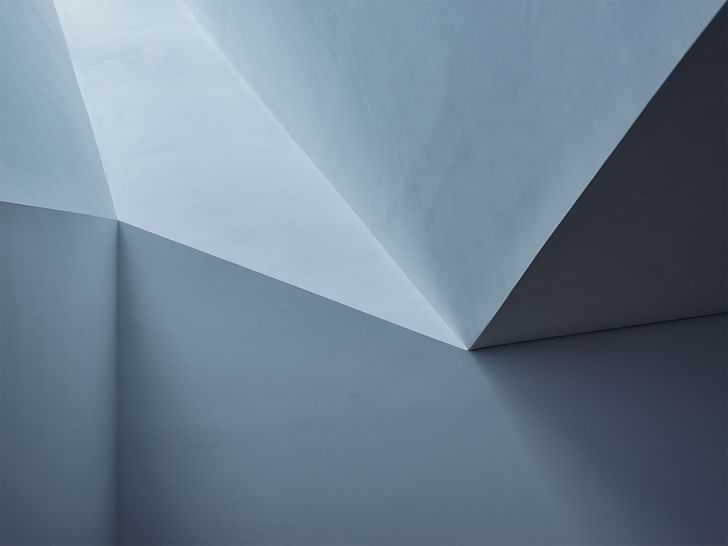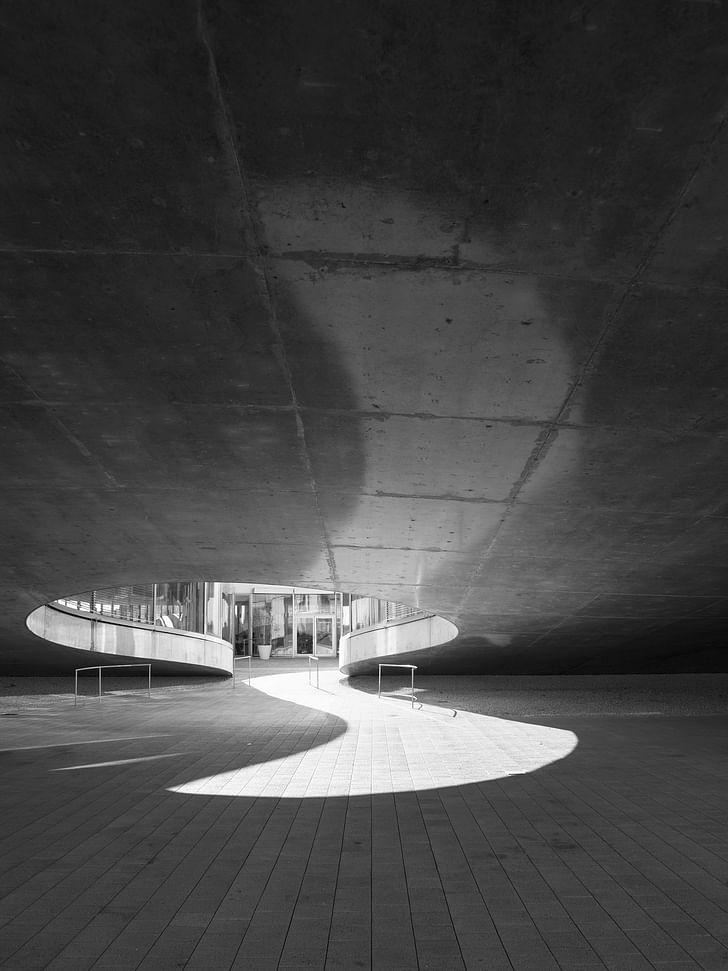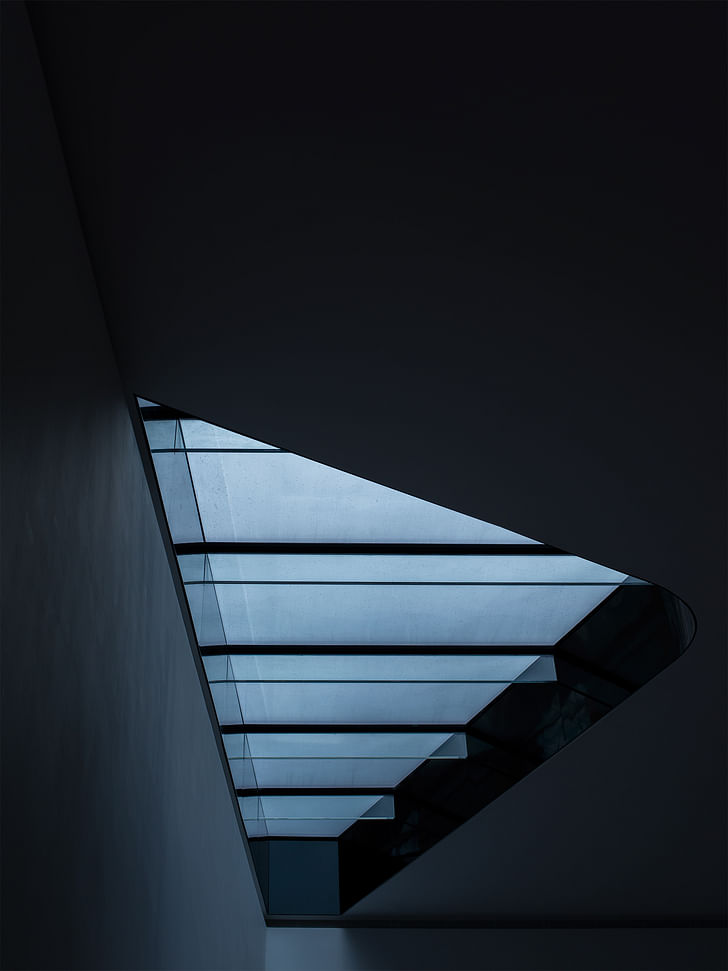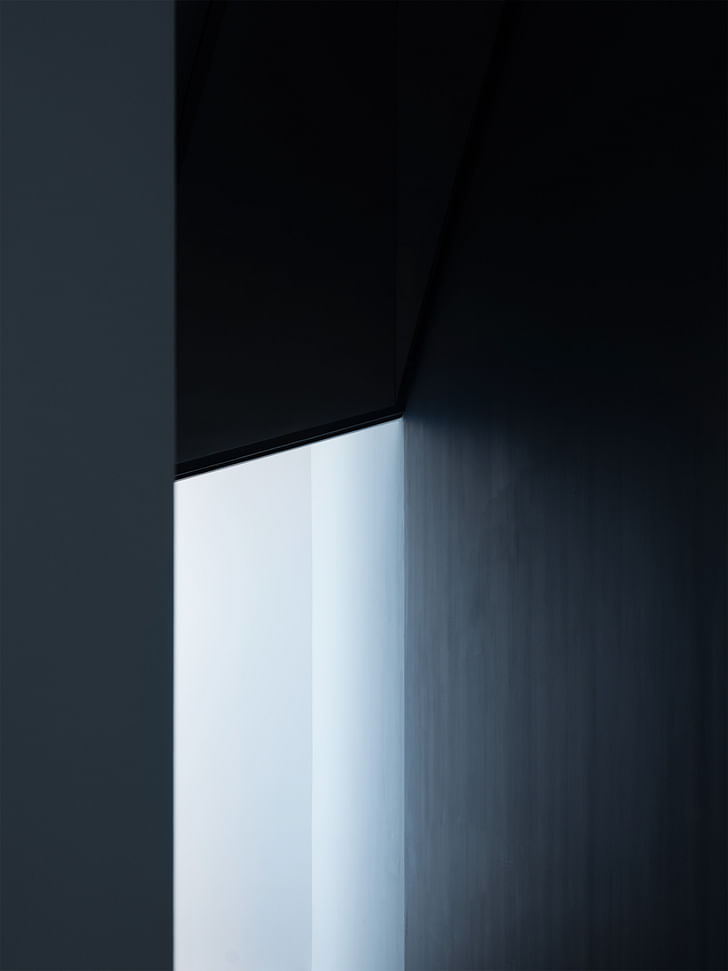

In Focus is Archinect's recurring series dedicated to profiling the photographers who help make the work of architects look that much better. What has attracted them to architecture? How do they work? What type of equipment do they use? What do they think about seeing their work in blogs?
For this installment, we interviewed Simone Bossi based between Milan and London.
What is your relationship with architecture? What drew you to architecture, as a photographer?
I grew up observing my fathers hard work on site as a builder, captivated by his intense contact with reality and the way he “possessed” the building until it was completed. I followed him often and I enjoyed all those rough, empty and naked spaces, sometimes they were cold and there was a strong smell of dust, but there were few moments, early in the morning or at the end of the day, when a gentle light silently came in: all this spaces became so calm, pure and true.
Later I studied Architecture in Milan and Seville and after five years as an architect between Italy, Switzerland and the Netherlands, I decided to dedicate myself entirely to photography.
I have never attended a photography course, I am a self-taught photographer. It was a spontaneous transition from my architectural studies. During the last university years, I had the opportunity to follow an esteemed architecture photographer in Milan where I understood that being a photographer could have be a tough job but as noble and interesting as being an architect. There was no a proper path: my interests in those specific moments kept it spontaneous, without any restrictions.This process has probably kept some sort of freedom in my approach and a constant need to understand, experiment and try by myself.
Everything was also related to my need to travel. It was also a good excuse to discover new parts of the city, which I would never find out otherwise. Later, my will to experience architecture in its true context emerged, where I could perceive the different moments of light, temperature and atmosphere of that specific moment or that particular season.


Who are your clients?
I work mainly for architects and more often with publishers. What I find important is the affinity between us, because photos have the role of simultaneously revealing the architect and photographer souls. They tell about the work but also who we are. The final result is strongly influenced by this fact.
As soon as I have time, I always try to work on personal projects without any specific commission. Here I can really understand myself and look for specific spaces I want to experience in some way or as a result of some influences that I have at that time.
I definitely consider important the entire research process as I have no restrictions, deadlines or specific requests.
In this conditions I can try to make all those fundamental mistakes that bring me to find new ways of approach or to consolidate the expression I am working on.

Do you mostly work in a specific region? What is your travel schedule like?
I work mainly in Europe and recently more often in Asia. My first project was far from my country of origin and it was more than natural not to limit myself to working in only a specific region.
My strong interest in travel and all the places and cities where I had the chance to live for a while help me to be very flexible.
My schedule is dynamic and changes frequently. I receive a call or an email and I am suddenly in a new country. I need to always consider the climate condition which can change an entire programmed week. I also love spending time in the studio to process all the images, to recollect all the thoughts, and do research for the next mission. I have always considered photography as a good balance between inside and out, but also between the real world and the other network that are part of our lives today. Through photography I can still feel the ground under my feet and the sun on my head.



What is your goal when capturing buildings in photographs?
I am not interested in simply describing an architecture project. I like to understand the feelings I can have in a space and work on them. I am fascinated by all those things that transform a place into a space. I've always found interesting how simple events can create intense atmospheres, transforming the ordinary in something magic. I am intrigued by the interior space and all those inside/outside situation. Probably it is an introspective process where I try to locate myself in this space and to understand how I perceive the atmosphere. I think this approach is free and spontaneous and through it, I am able to reveal pure space sensations in the images. I like looking for the light but I am not scared to reveal the darkness.
What are your thoughts about including people in your photos? Is it important to photograph a building in use, or by itself?
It really depends on the project, the approach, and the circumstances. It is positive when people help to reveal an atmosphere, an unexpected situation, or a spatial reaction. Especially when I am working with an heavy camera, it is always a relationship between these three elements: you, the tripod and other people; being directly in front of the camera or a step back can completely changes the people reaction.



What are your favourite pieces of equipment?
Mostly, all those things that make me slower, but I try to keep strongly in my mind that the approach is more interesting than any technics. Instruments should follow an intention or better a will of expression. They are just a consequence. Look for the technically perfect shots is just boring. However I use a digital camera with few fixed lens and an analog camera with just one lens. I am not that interested in being updated with all the latest technologies. This is too fast, at least to really know how to use it properly. I prefer less but better. Some work needs to be more structured and I need to work using an heavy tripod, but some other are more free and I enjoy to work instinctively free handheld.
Do you work alone?
I usually work alone, but I actually meet many different people on the scene. It is like a new unique performance every time. On commissions, what I appreciate most, it is that a photo shooting represents a sort of special day in the office routine. Sometimes the all office stop their ordinary day of work and spend time with me by enjoying the space they designed or by making considerations about what they did. On the other hand, sometimes I am asked to spend few days living in the commissioned project and I found myself completely alone indeed; Under this condition I can deeply experience a place and try to translate my reaction to it.


How do you feel about seeing your photographs on blogs and websites?
Like it or not, all the images published on blog and web are one of the most influential and quickest way we use to experience architecture nowadays and it is a privilege for me to give my contribute. Everybody know how much powerful they are: some bad images can damage a nice space and some nice image can transform a standard space in something special: this will fastly reach a big audience in few clicks. We became all "publishers" by sharing directly our contents and this could be very positive and negative at the same time.
I am so glad when I can motivated people to visit a space through a feeling caused by some photographs. I love when people feel the need to experience by themselves about what they felt through my eyes.
Simone Bossi is an Italian freelance photographer with an architectural background based in Milan and London. He has worked for magazines, local and international architects all over Europe. His work is regularly published on the main architecture websites and notably in Sou Fujimoto’s monograph Architecture Works 1995-2015.
Ellen Hancock studied Fine Art and History of Art at The University of Leeds and Sculpture at Mimar Sinan Fine Arts University in Istanbul.Now based in London she has a keen interest in travel, literature, interactive art and social architecture.
No Comments
Block this user
Are you sure you want to block this user and hide all related comments throughout the site?
Archinect
This is your first comment on Archinect. Your comment will be visible once approved.